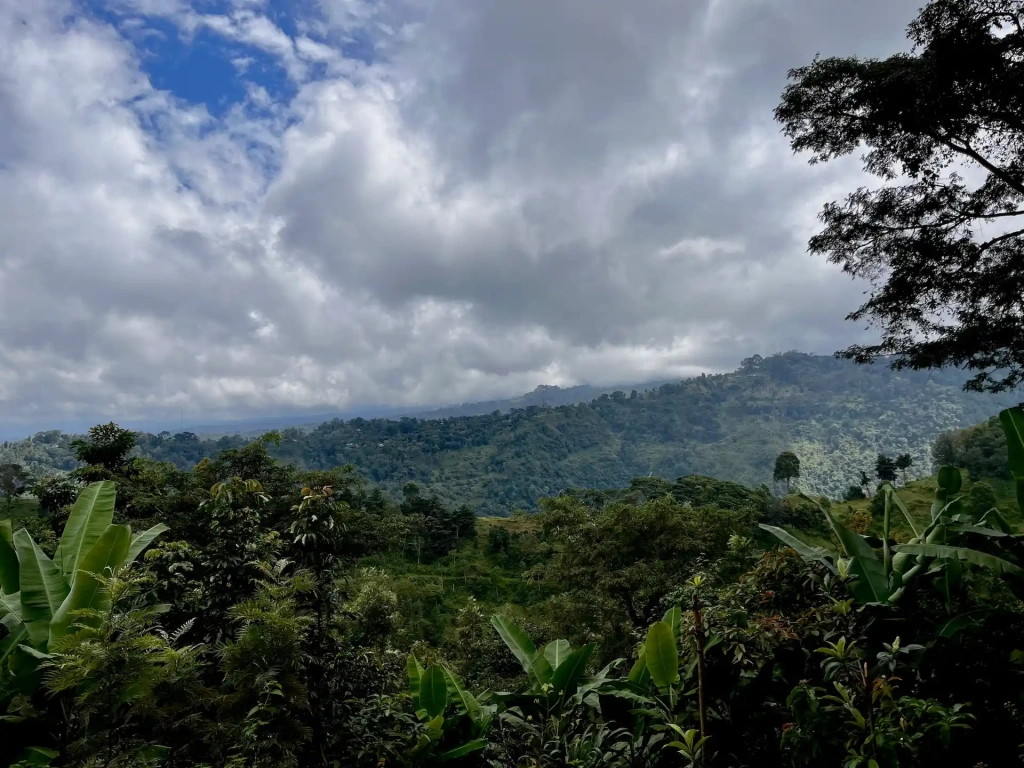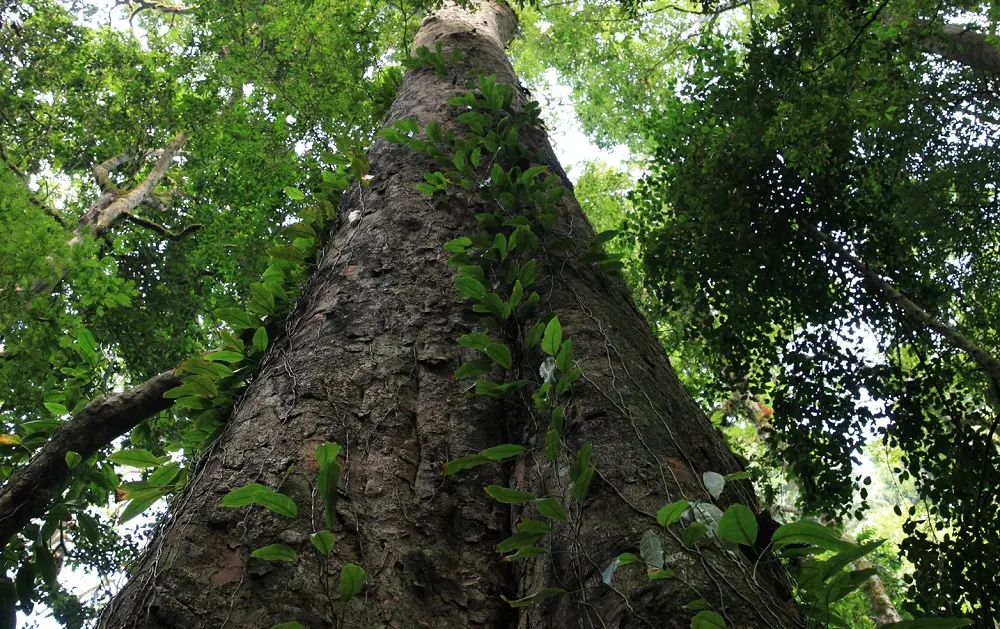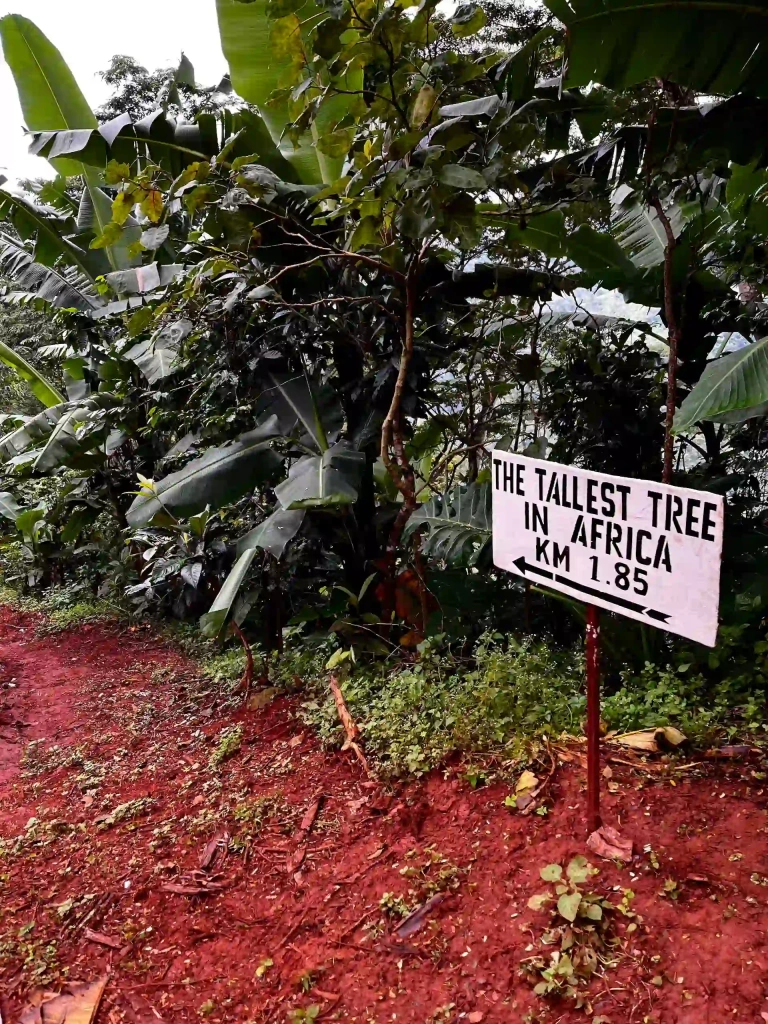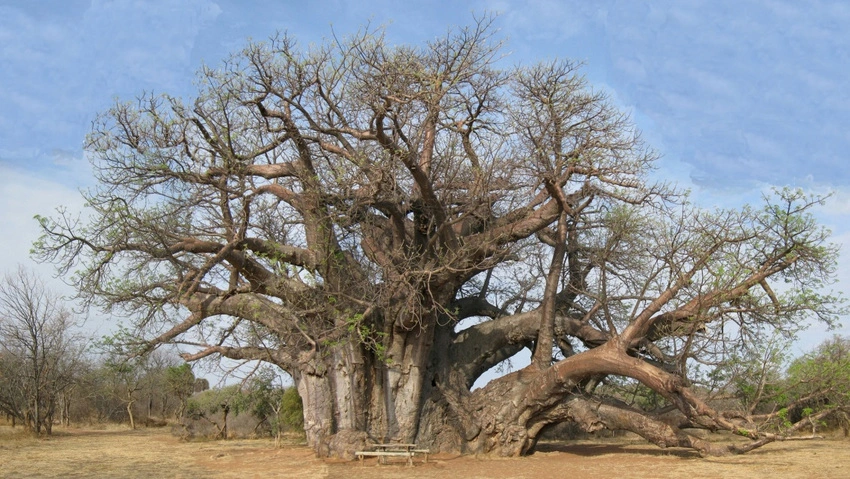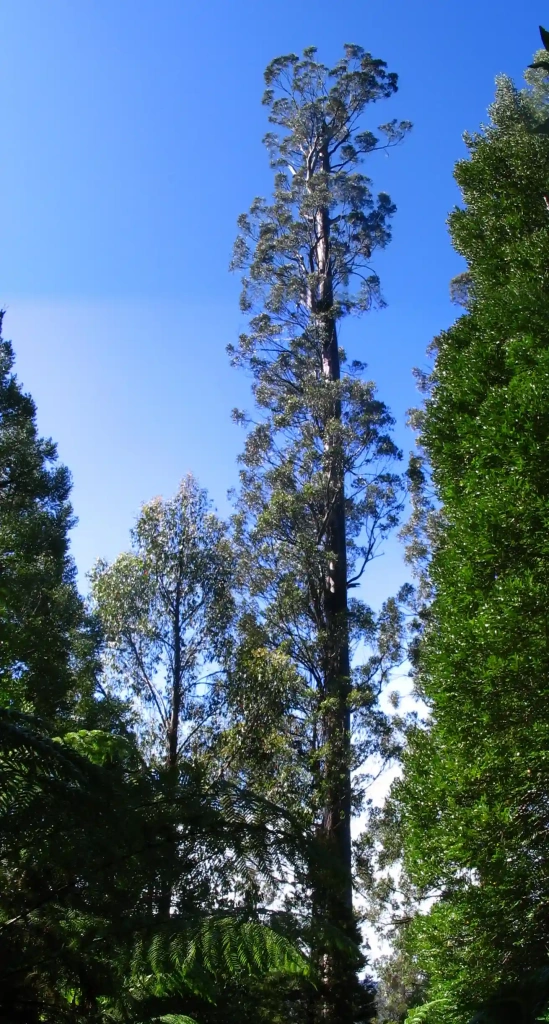The nature of Mount Kilimanjaro is truly unique. One of its most remarkable features is the tallest tree in Africa that grows on the mountain's slopes.
In this article, you’ll find out which species this tree belongs to, its exact location, and how you can see it for yourself. We’ll also explore other giant trees around the globe, including the tallest tree in the world.
Who discovered Africa's tallest tree?
In 2016, a team of researchers led by Andreas Hemp from the University of Bayreuth in Germany announced the discovery of the tallest known tree in Africa. This giant stands at 81.5 meters (268 feet) tall, with a diameter of 2.55 meters (8.5 feet), and is estimated to be . More details about this remarkable tree can be found in the authors' report. Trees of this species lack common names outside Africa, so it is primarily recognized by its scientific name, Entandrophragma excelsum, which in Latin translates to "tall Entandrophragma."
The impressive size of E. excelsum, which earned it a place among the world’s tallest tree species, has been attributed by scientists to the favorable climate and mineral-rich volcanic soil of Mount Kilimanjaro. The tree was discovered on its southern slope in Tanzania. This side of Kilimanjaro is encircled by a belt of tropical rainforest, where the record-breaking tree thrives in one of the river valleys.
Around 20 years ago, Andreas Hemp discovered a group of trees in this area that were strong contenders for the title of the tallest in Africa. However, precise measurements could not be taken at that time. It wasn't until 2016 that scientists returned with the necessary tools. Using a laser rangefinder, they accurately measured the height of the tallest tree at 81.5 meters, setting a new record.
The trees in this area typically rarely exceed 65 meters (213 feet) in height. The only exception was a tree from an introduced species, the Australian Sydney blue gum (Eucalyptus saligna). Among such eucalyptus trees growing in South Africa, a record was held by a tree exactly 81.5 meters (268 feet) tall, but it died in 2006. It is worth noting that E. excelsum. is the native species that grows only in tropical Africa.
What do we know about Entandrophragma excelsum?
Before the recent discovery, it was believed that trees of this species didn't grow taller than 55 meters (180 feet). However, in this extraordinary location on the southern slopes of Mount Kilimanjaro, the height of the ten tallest Entandrophragma excelsum trees begins at 59 meters (194 feet). It's as if the Roof of Africa, as Kilimanjaro is often called, has helped these trees reach such record heights.
These trees are also found in neighboring regions, including Uganda, Rwanda, Burundi, the Democratic Republic of the Congo, Zambia, and Malawi. They thrive in mountainous forests at elevations of up to 2,150 meters (7,054 feet) above sea level. The following characteristics distinguish specimens of this species.
This is a large deciduous tree with short leaves but massive branches and a wide-spreading canopy. It has moderately light wood, with an average density of 460 kg/m³ (28.8 lb/ft³) at 12°C (53.6°F) humidity, comparable to spruce wood. The wood's strength and tendency to deform significantly during drying, along with other characteristics, make it less desirable for large-scale logging. Additionally, the tree's rarity diminishes its commercial appeal in comparison with other sources of African mahogany. It is more commonly used as natural shade for crops like coffee plantations or cut for fuel. According to the latest reports, E. excelsum is not currently classified as a threatened species. However, scientists strongly recommend expanding the boundaries of Kilimanjaro National Park to include the area where these trees grow, to ensure their protection.
By the way, the average height for this species is only 45 meters (147.5 feet). The record-breaking height of the trees on Kilimanjaro is the result of several factors coming together. They have managed to grow free from vine parasites, faced low competition in the valley, and benefited from the fertile volcanic soil.
Scientists estimate that there are about 1,100 large Entandrophragma excelsum trees on Kilimanjaro, which is relatively few. There were likely more trees before logging activities intensified on the mountain's slopes. Fortunately, the giants of Kilimanjaro are now relatively safe, as the valley has recently been designated a protected area.
The residents of the nearest village have created a path to the tree and keep it well-maintained. As soon as we found out that the tree was not far from Moshi town, we set off without delay. We were excited about the chance to see this marvel in person.
Our tour to the record-breaking tree
We arrived in the village of Tema, located in Mbokomu, Moshi District, high on the slopes of Kilimanjaro, by . It was April, and parts of the road had been washed out, so we had to walk part of the way.
The elder of the village welcomed us. He personally maintains the trail starting at the village edge and winding up the slope into the forest. A sign indicated that Africa's tallest tree is nearly two kilometers from this point.
We started our journey along the narrow trail, which meandered uphill and downhill. We were surrounded by dense vegetation: the trail often becomes overgrown since there are few visitors. As we walked, the elder used a pangá, a local machete type, to clear the path ahead. Occasionally, he would quickly carve steps into the ground with the same pangá, as the rains had washed away the trail.
Along the way, we encountered massive banana trees. The deep growls of colobus monkeys—black-and-white primates with bushy tails—echoed through the forest. Occasionally, we spotted birds flitting above the tree canopies, though we couldn't identify their species. The trail was narrow and slippery, with a steep drop to the left, so we focused our attention on our footing. Fortunately, we didn't come across any snakes, although we did see many centipedes on the ground.
As we approached the valley, the trail crossed several narrow but fast mountain streams. We navigated these by stepping on stones, some of which our guide had thoughtfully repositioned for us. Rain began to fall, which is typical for this time of year. We got thoroughly soaked and sometimes had to slide on our hands and knees—or even our bottoms—over the slippery, wet clay, making us look rather disheveled. At the river, local boys caught up with us, bringing a few umbrellas to help shield us from the downpour.
The journey took about an hour each way. Then, we finally saw this Tanzanian giant. It was difficult to fully appreciate its height because other towering trees surrounded us, their canopies intertwining overhead. We had to trust the elder’s word that this was the record-breaker. We embraced the tree and took photos of this natural marvel—despite the rain, the trek through the forest was definitely worth it. Farewell, mkukusu! This is the Swahili name for this species of tree.
How can I see Africa's tallest tree?
If you're planning a trip to Tanzania, whether for climbing Kilimanjaro or going on a safari in the national parks, consider setting aside a separate day to visit the E. excelsum. The tour takes about two hours and takes place in the montane tropical rainforest on the slopes of Mount Kilimanjaro. Be sure to allow extra time for travel to and from the starting point. The total duration of the trip will depend on the distance from your accommodation.
Plan your visit to the Entandrophragma excelsum during the “dry season,” which excludes April, May, November, and December. You can always add another tour from Altezza Travel to your itinerary.
Other record-breaking trees in Africa
Let's explore other notable African trees that hold records for various characteristics.
What is the widest tree in Africa?
In South Africa's Limpopo Province, a baobab tree (Adansonia digitata) known as Sagole stands out as the thickest tree on the continent. With a trunk diameter of 10.5 meters (34.5 feet) and a circumference of nearly 33 meters (108.3 feet), it would take about 20 people to encircle it with their arms. Radiocarbon dating places its age between 800 and 900 years. While this is impressive, it is not the oldest age record for baobabs. The oldest known baobab tree was estimated to be around 2500 years old. However, the record-holder, the Panke baobab, passed away in 2011, so the title of the oldest now belongs to a different species.
What is the oldest tree in Africa?
In Morocco, North Africa, a yew tree (Taxus baccata) is believed to be the oldest tree on the continent, with an estimated age of 2,374 years, plus or minus 50 years. Yew trees are renowned for their longevity, with some estimates suggesting they can live up to 4,000 to 5,000 years. This species is widespread in Europe, where it has been extensively studied.
By the way, nearly all parts of the yew tree are toxic. There are many documented cases of animals consuming the tree's leaves and dying from poisoning shortly afterward. The leaves are needle-like, and 50 grams is considered a lethal dose for humans. There is even a recorded instance where someone inhaled sawdust from a yew tree, which led to their death. So, be cautious if you set out to find the oldest tree on the African continent.
Which tree is the tallest in the world?
We previously discussed the Seven Summits—the highest mountains on each continent. Now, let's cover the tallest trees in the world. We’ll skip Antarctica, as the southernmost continent currently has no trees. However, research has shown that in the past, Antarctica was covered with forests and had a rich variety of plant species.
We’ve already introduced you to the Entandrophragma excelsum (81.5 meters), which grows on Mount Kilimanjaro. Among the tallest trees in the world, it ranks near the bottom. Now, let's explore the other record-holding trees and discover which one claims the title of the tallest on Earth.
The European Karri Knight
In Portugal, within one of the valleys in the Centro region, grows Eucalyptus diversicolor, commonly known as karri. Although this species is native to Western Australia, it has been naturalized in other regions, including Africa. In the late 19th century, a few saplings were planted in the Portuguese national forest of Vale de Canas, so the record-holding tree is now around 150 years old. The tallest eucalyptus, measured manually, reaches a height of 72.9 meters (240 feet). Laser measurements provide slightly different figures but still place this European giant at the lower end of the list.
The impressive Portuguese specimen is known as the "Karri Knight." In its native Australia, tourism is significantly bolstered by the striking presence of these tall eucalyptus trees, which dominate the landscape. Similarly, when visiting Portugal, many people are eager to see this majestic forest "Knight".
The faveira of South America
In Brazil, on the border between the states of Pará and Amapá, grows Dinizia excelsa, also known as angelim or faveira. These trees are found deep within the dense Amazon rainforest, which makes accessing them quite challenging. Scientists first spotted a group of exceptionally tall trees from an airplane flying over the forest. After organizing an expedition, they measured these remarkable trees, revealing that the tallest among them reached a record-breaking height of 88 meters (290 feet). This makes it just five meters (16 feet) shorter than the Statue of Liberty.
The age of this Brazilian marvel is estimated to be between 400 and 600 years. Dinizia excelsa is native to the tropical forests of Brazil, Suriname, and Guyana. While the Amazon rainforest faces extensive deforestation, and the rates are rising, this particular tree remains safeguarded due to the remoteness and inaccessibility of its location.
The Australian Centurion
Let's head to the Australian island state of Tasmania, where the striking columnar trees known as Eucalyptus regnans thrive. The tallest of these trees, located in a local forest reserve, was discovered in 2008. The Forestry Tanzania named it Centurion, a nod to the term for Roman army commanders who led units of one hundred soldiers, and the Latin word centum, meaning "one hundred." Remarkably, Centurion stands at nearly one hundred meters tall, measuring exactly 100.5 meters (330 feet). This makes it four and a half meters (15 feet) taller than Big Ben.
This measurement makes Centurion the tallest eucalyptus tree in the world. Unfortunately, Eucalyptus regnans are more vulnerable to fires compared to other eucalyptus species. In 2019, a wildfire swept through the forest, destroying two other giant trees near the record-holder. Fortunately, Centurion survived, although it did suffer some scorching.
It's worth noting that scientists believe the tallest tree ever measured to be mountain ash, known as the Ferguson Tree. Reportedly standing at 132.6 meters (435 feet), it was discovered in Victoria, Australia, by forester William Ferguson and measured in 1872. Today, however, many consider the measurement data to be questionable. Nevertheless, documents from the Victoria Forest Service reference specimens that were as tall as 140 meters (460 feet). While we can't verify these reports, one thing is clear — before human activity intensified, many more towering trees once flourished on Earth.
The Asian cypress tree
It's time to explore one of the most impressive canyons on the planet — the Yarlung Tsangpo Grand Canyon in China. Here, the mighty Brahmaputra River cuts through the Tibetan Plateau, gathering waters from the Himalayan Mountains and creating stunning waterfalls. Within the national reserve, towering Himalayan cypress trees (Cupressus torulosa) thrive, favoring the area's limestone cliffs.
In 2023, an incredibly tall cypress was discovered here, measuring 102.3 meters (335 feet). The age of this giant has not been precisely determined, but it is estimated to be at least 400 years old. It's possible that the record might soon be updated, as such records are frequently broken.
Hyperion, the giant of North America
We are finally ready to discuss the tallest tree ever discovered and reliably measured on our planet—the coast redwood, scientifically known as Sequoia sempervirens. Commonly referred to as redwood due to the rich red color of its bark when removed, this tree is also notable for its incredibly thick bark, which can reach up to 30 centimeters (12 inches).
The tallest redwood in the USA is located in Redwood National Park, standing at nearly 116 meters (380 feet) tall. This tree has a name—Hyperion. The age of this supergiant is estimated to be between 600 and 800 years.
Seeing this giant tree is quite challenging. The reason is that it is protected from trampling visitors. The exact location of Hyperion is kept secret, and approaching it not only incurs a hefty fine but also risks imprisonment.
Hyperion nearly fell victim to logging in the 1970s when the area was not yet a protected reserve. As the designation of the forest as a protected area was imminent, loggers, having heard of the government's plans, rushed to cut down as many redwoods as possible, working around the clock. By the time the area was declared a national park, they had stopped just a few dozen meters from Hyperion.
If something were to happen to Hyperion, its top title could be claimed by one of the neighboring redwoods. One of these trees might eventually grow taller over time. One such contender is the redwood named Helios, which is growing at a faster rate.
The list of the tallest trees is updated from time to time. If you have information about new contenders for this position in a given continent, please leave a comment or write to us, and we will update the article accordingly.
All content on Altezza Travel is created with expert insights and thorough research, in line with our Editorial Policy.
Want to know more about Tanzania adventures?
Get in touch with our team! We've explored all the top destinations across Tanzania. Our Kilimanjaro-based adventure consultants are ready to share tips and help you plan your unforgettable journey.















